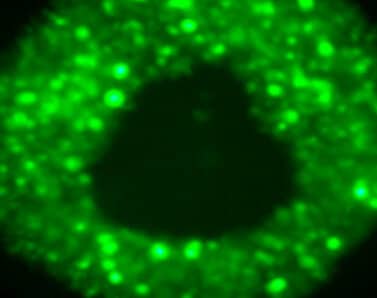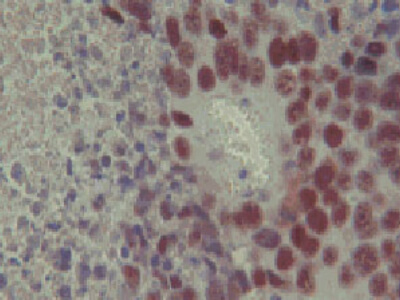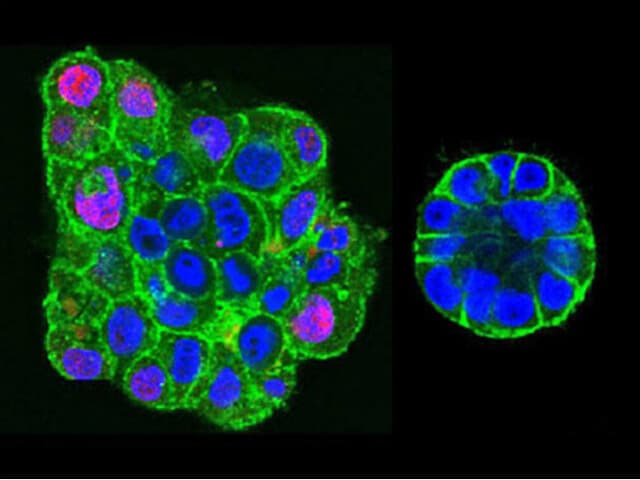Transgenic cells with viruses and moderate physical stress open new horizons in the fight against cancer

One of the most difficult problems in cancer treatment is the uncertainty that the tumor cells have been completely destroyed. Often - too often, unfortunately - shortly after treatment with chemotherapy and/or radiation, the tumor returns and reappears and even metastasizes to other organs. Many studies dealing with cancer focus on finding ways to prevent recurrence. A particularly interesting and complex approach was developed by researchers from the University of Sheffield in England, led by Prof. Claire Lewis (Lewis). The method harnesses cells of the immune system, which naturally fight cancer tumors. The researchers chose macrophages (macropahges) - a type of white blood cells that swallow foreign bodies that penetrate the body's tissues.
without oxygen

The macrophages belong to the innate arm of the immune system, that is, the arm that serves as the body's first line of defense and is unable to activate a mechanism uniquely adapted to the foreign agent, such as the acquired immune system. Since they are not specific, these cells operate partly in areas that have characteristics of hostile activity, and partly at levels where there is a lack of oxygen. This is exactly the situation created at the center of many cancerous tumors, where the cells divide without control, and without producing adequate blood vessels to supply them with oxygen. That's why there are cells in the center of the tumor that simply suffocate in the absence of oxygen. This situation is a signal for macrophages to attack the tumor tissue and start engulfing its cells. In this method and in other ways, the immune system apparently succeeds in eliminating quite a few tumors on its own, even before we are aware that they have formed. However, this is not enough, because many tumors succeed in thriving and developing despite the efforts of the immune system. The researchers from Sheffield took the ability of the macrophages to quickly reach the center of the tumor and attack its cells, and decided to perfect it, by turning these cells viral - literally.
Targeted elimination
Prof. Lewis and her team took macrophages from mice, and implanted in them, through genetic engineering, viruses - viruses - deadly to cancer cells. Viruses differ from most other life forms in one thing - they do not have an independent existence outside the cell they attack. The virus itself is nothing but genetic material (DNA or RNA) packed in a protein box that knows how to do only one thing - penetrate cells. As soon as the virus is inside the cell, it takes over its production systems, causing the cell to replicate more and more petitioners from the genetic material of the virus, and assemble more and more such protein boxes, until the infected cell explodes, scattering thousands of such boxes around it that infect the neighboring cells, and God forbid. This is one of the reasons that it is possible to produce a vaccine against many viruses - using antibodies that recognize components of the box and attack the viruses outside the cell - but it is very difficult to produce drugs against viruses, because inside the cell the virus is well protected, and it is very difficult to find substances that distinguish between a healthy cell and a cell infected with the virus. The researchers implanted the genetic material of the cell-killing virus inside the macrophages, and injected them into mice with prostate cancer, after they had received a round of "normal" cancer treatment - chemotherapy or radiation. The macrophages that were injected into the tumor area flocked to it with their friends, who were called to the center that was suffering from a lack of oxygen. When they got there, they also started ingesting tumor cells, and on that occasion they were injected with the genetic material of the virus. These macrophages soon become factories for viruses, and they spread them among the tumor cells. The viruses take over the cells and destroy them, but how can we ensure that the viruses do not continue on the path to destroy the healthy cells as well? Here comes another safety key introduced by the researchers from Sheffield. Prostate cancer tumor cells have some DNA segments unique to them, which are not present in normal prostate cells. The engineered viruses inside the macrophages were engineered so that they could only reproduce in the presence of these DNA segments, or in other words, the viruses could only reproduce in the prostate cancer tumor cells. This guarantees good chances of destroying the tumor completely, and preventing the recurrence of the tumor. Indeed, in the article published in the journal Cancer Research, the researchers report real success in destroying the tumors - meanwhile, as mentioned, in mice.
From research to medicine

In light of the success, the researchers hope to move relatively quickly to experimental treatment in humans. Prof. Lewis and oncologist Dr. Janet Brown are now trying to raise the necessary funding to start clinical trials. "I am convinced that we will get the funding because the pre-clinical results are very promising," Lewis said to Network B. "The next step will be to expand the scope of the method, and adapt the macrophages and viruses to other types of tumors."
Squeezing the tumor
Another very curious study was done at the American University of Berkeley. The team of researchers, led by Prof. Daniel Fletcher (Fletcher) and Prof. Mina Bissell (Bissell) examined the effect of moderate physical stress on breast cancer tumor cells. The researchers grew the cells in culture, inside a flexible silicon mold. They discovered that exerting pressure on the cancer cells generates an amazing process - the cells cease their cancerous activity and return to functioning as normal cells. The tissue of the milk ducts from the breast is also organized in an orderly manner following the application of physical pressure, instead of the disorganized structure that characterizes the cancerous tissue. These findings were recently presented at the meeting of the American Society for Cell Biology in San Francisco. The researchers also discovered that the presence of a protein called cadherin, which is responsible for the cells sticking together, is essential for the process of returning from a cancer cell to a normal cell. It is important to note that these experiments have been done so far only in cell culture, and the researchers also emphasize that the research does not indicate that measures such as a pressure bra may delay the development of cancer or reverse the process. According to them, the pressure itself will not be a cure, but the method makes it possible to focus the search for different substances responsible for this process, and to try to identify among them substances that can help in the treatment of breast cancer.
ettaynevo@yahoo.com
Related links:
Link to the article on the website of the journal Cancer Research
Israeli development - a radioactive needle against cancer (the small light)
